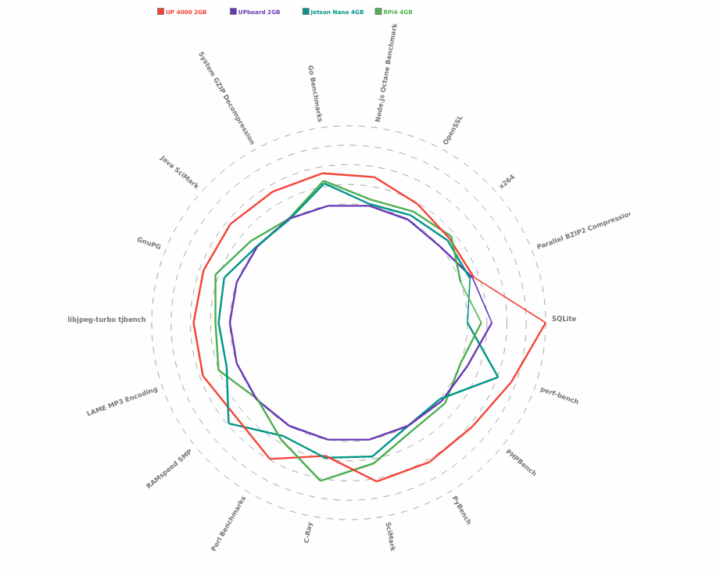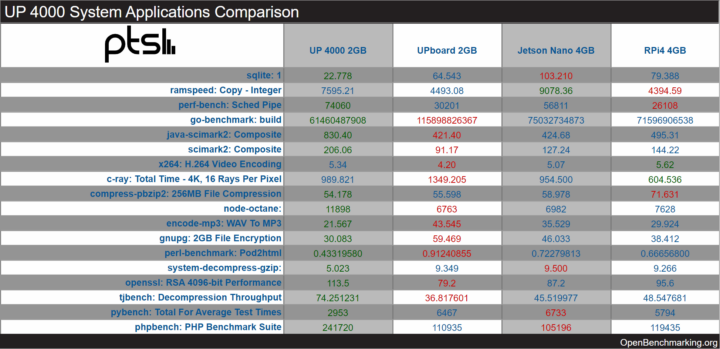We wrote about the UP 4000 SBC with an Intel Apollo Lake processor and Raspberry Pi form factor yesterday. But today, I noticed the UP community had put up a benchmarks comparison between the UP 4000 board, the original UP board (Atom x5-8350), the Raspberry Pi 4, and NVIDIA Jetson Nano.
They used several of the Phoronix Test Suite benchmarks running on Ubuntu 20.04 (x86) or Ubuntu 18.04 (Arm) on all four boards. The UP 4000 board used featured an Intel Celeron N3350 dual-core processor @ 2.40GHz, the 2GB RAM version of the UP Board, an RPi 4 with 4GB RAM, and a Jetson Nano developer kit with 4GB RAM.
As one would have expected, the UP 4000 is ahead in most tests, even though they did not select a model with a quad-core processor such as a Pentium N4200. Note that reading the table may be confusing as for some tests higher is better, while for others lower is better (e.g. it took less time). Bear in mind that the storage speed (eMMC or SD card) may also impact the performance of some benchmarks such as sqlite.
On average the UP board is the slowest of the lot, Jetson Nano had the highest memory bandwidth, and the Raspberry Pi 4 fared well for H.264 video encoding and software ray tracing. I’m however a bit confused as to why it seems to perform that well in OpenSSL (RSA 4090-bit) considering the lack of Armv8 crypto extension in the Broadcom BCM2711 processor [Update: that’s because there’s no RSA acceleration in Armv8 or AES-NI since RSA is rather obsolete, see comments section]. The UP 4000 SBC was at least twice as fast as the UP board in PHPBench (2.298x), PyBench (2.28x), SciMark (2.26x), Perl benchmarks (2.106x), LAME MP3 encoding (WAV To MP3 at 2.019x), and libjpeg-turbo tjbench (decompression at 2.017x).

You’ll find the full details of the benchmarks on openbenchmarking.org.
Via UP blog

Jean-Luc started CNX Software in 2010 as a part-time endeavor, before quitting his job as a software engineering manager, and starting to write daily news, and reviews full time later in 2011.
Support CNX Software! Donate via cryptocurrencies, become a Patron on Patreon, or purchase goods on Amazon or Aliexpress





